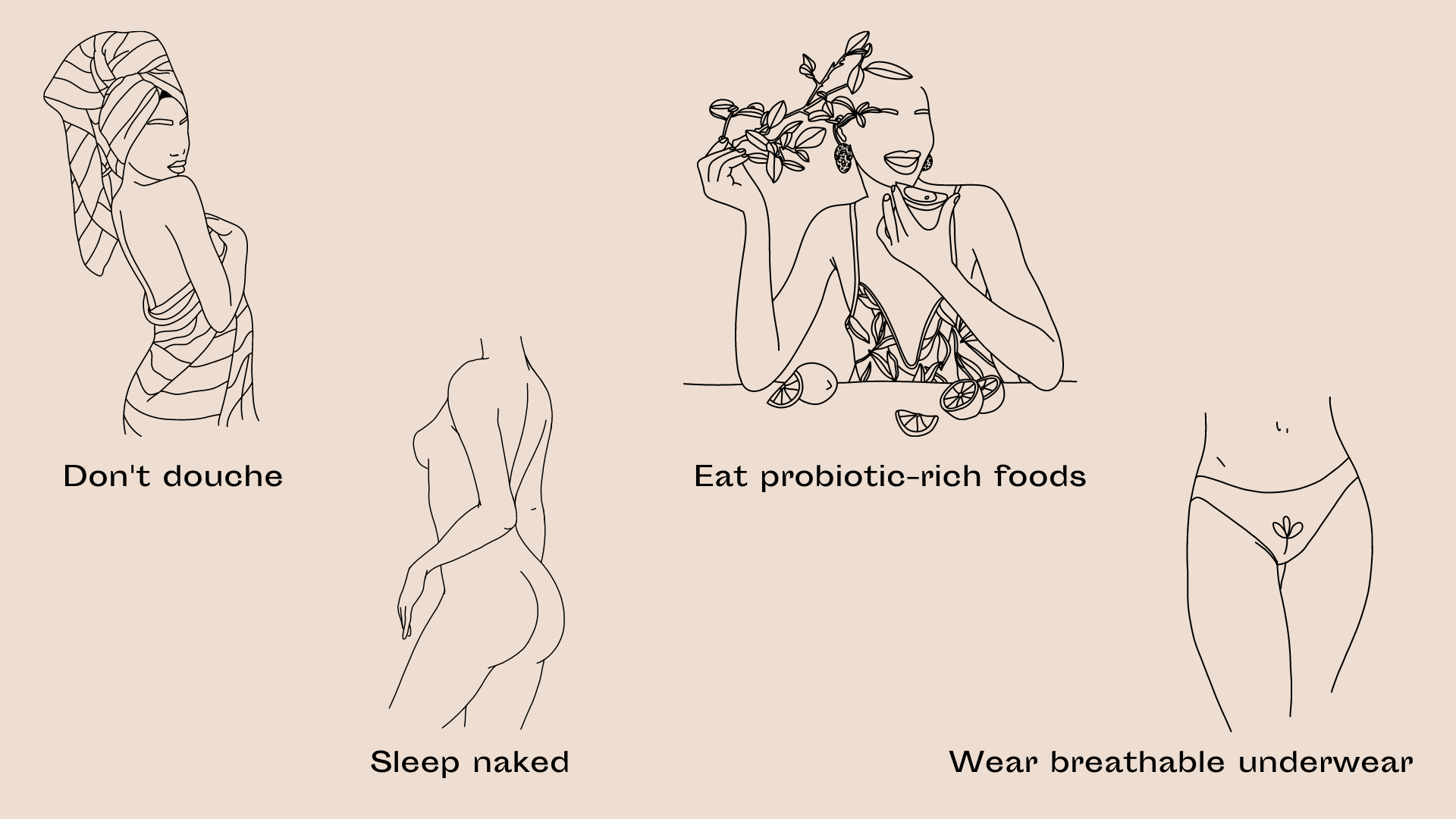Tips for healthy and happy vagina
Healthy vagina means no infections, no irritations, and ultimately more confidence, better sex and a happier you.
Want a healthy and happy vagina? You need to take care of your vaginal microbiome. A little spoiler alert here - less is more.
Don’t douche.
Vaginas are incredible. They clean themselves naturally by making mucous. Trust your body’s own processes and don’t disrupt the natural balance of vaginal flora and acidity.
Douching (washing the inside of the vagina) can cause an overgrowth of harmful bacteria. This can lead to numerous health problems including vaginal irritation and dryness, bacterial vaginosis, yeast infections, pelvic inflammatory disease and problems during pregnancy.
As for your vulva you don’t need anything special. Warm water and gentle soap are really all you need. Most products marketed to help you feel and smell cleaner aren’t backed by any scientific evidence and can irritate your vulva as well as cause other problems.
Eat probiotic-rich foods
Lactobacillus species (probiotic bacteria) is the most dominant type of “good” bacteria found in a healthy vagina. That’s why eating more probiotic-rich foods benefits your vaginal health.
Probiotics can help balance acidity levels and microflora in the vagina and prevent vaginal yeast infections. You can find probiotics in fermented foods such as kimchi, tempeh, kombucha, sauerkraut, miso, yoghurt, pickles and natto.
Sleep naked
Let your vagina “breathe” at night. Vagina is prone to produce moisture during the night. Pyjamas can trap that moisture and create a breeding ground for bad bacteria and yeast. Sleeping naked allows some of the heat and moisture to escape, this way helping avoid vaginal infections.
Sleeping naked is also a great way to keep your body cool at night, which may improve your sleep quality and boost your calorie-burning abilities.
Wear breathable underwear and avoid wearing panty liners
Breathable underwear makes vaginas happy. The best, gentle fabric to touch the vulva is cotton. It’s breathable and absorbent, which helps prevent yeast infections. Synthetic materials don’t allow the vaginal area to breathe. Instead they create moist, warm and dark environment - a perfect breeding ground for yeast infections.
You also should’t wear panty liners every day since you can disrupt the vaginal microbiome balance by over-waring them.
Some related scientific research if you want to delve further into this subject 🤓
Vaginal douching
Cottrell B. H. (2003). Vaginal douching. Journal of obstetric, gynecologic, and neonatal nursing : JOGNN, 32(1), 12–18. VIEW
Cottrell B. H. (2010). An updated review of of evidence to discourage douching. MCN. The American journal of maternal child nursing, 35(2), 102–109. VIEW
Ness, R. B., Hillier, S. L., Richter, H. E., Soper, D. E., Stamm, C., McGregor, J., Bass, D. C., Sweet, R. L., & Rice, P. (2002). Douching in relation to bacterial vaginosis, lactobacilli, and facultative bacteria in the vagina. Obstetrics and gynecology, 100(4), 765. VIEW
Sleeping naked
Okamoto-Mizuno, K., & Mizuno, K. (2012). Effects of thermal environment on sleep and circadian rhythm. Journal of physiological anthropology, 31(1), 14. VIEW
Lee, P., Smith, S., Linderman, J., Courville, A. B., Brychta, R. J., Dieckmann, W., ... & Celi, F. S. (2014). Temperature-acclimated brown adipose tissue modulates insulin sensitivity in humans. Diabetes, 63(11), 3686-3698. VIEW
Probiotics for vaginal health
Cribby, S., Taylor, M., & Reid, G. (2008). Vaginal microbiota and the use of probiotics. Interdisciplinary perspectives on infectious diseases, 2008, 256490. VIEW
Hilton, E., Isenberg, H. D., Alperstein, P., France, K., & Borenstein, M. T. (1992). Ingestion of yogurt containing Lactobacillus acidophilus as prophylaxis for candidal vaginitis. Annals of Internal Medicine, 116(5), 353-357. VIEW
Reid, G., Charbonneau, D., Erb, J., Kochanowski, B., Beuerman, D., Poehner, R., & Bruce, A. W. (2003). Oral use of Lactobacillus rhamnosus GR-1 and L. fermentum RC-14 significantly alters vaginal flora: randomized, placebo-controlled trial in 64 healthy women. FEMS immunology and medical microbiology, 35(2), 131–134. VIEW
Recine, N., Palma, E., Domenici, L., Giorgini, M., Imperiale, L., Sassu, C., Musella, A., Marchetti, C., Muzii, L., & Benedetti Panici, P. (2016). Restoring vaginal microbiota: biological control of bacterial vaginosis. A prospective case-control study using Lactobacillus rhamnosus BMX 54 as adjuvant treatment against bacterial vaginosis. Archives of gynecology and obstetrics, 293(1), 101–107. VIEW
Akgül, T., & Karakan, T. (2018). The role of probiotics in women with recurrent urinary tract infections. Turkish journal of urology, 44(5), 377–383. VIEW

